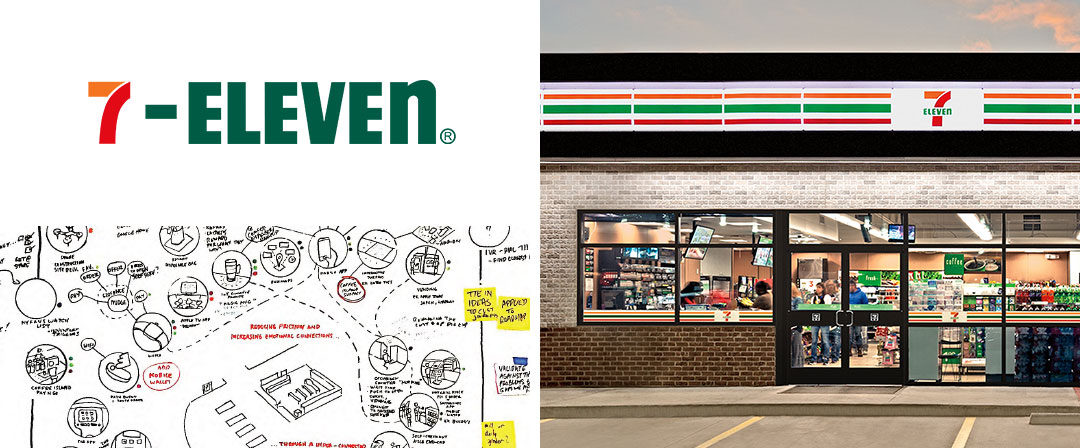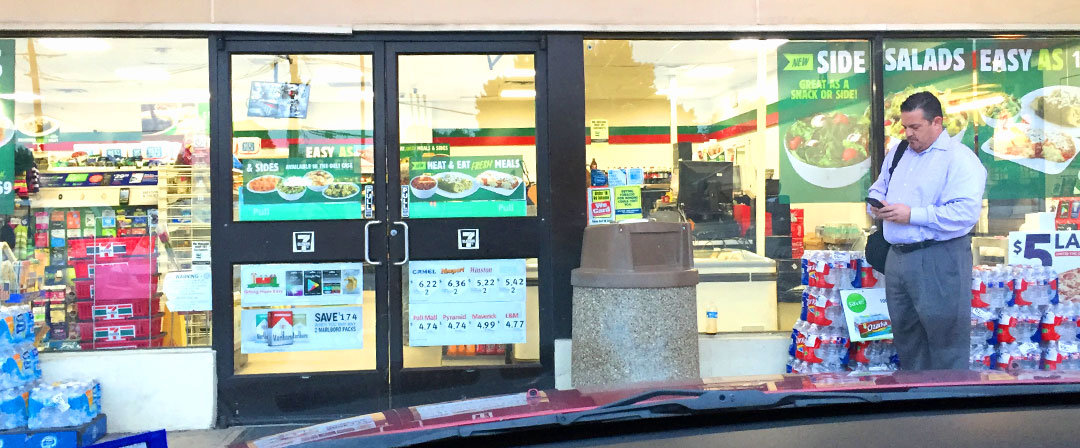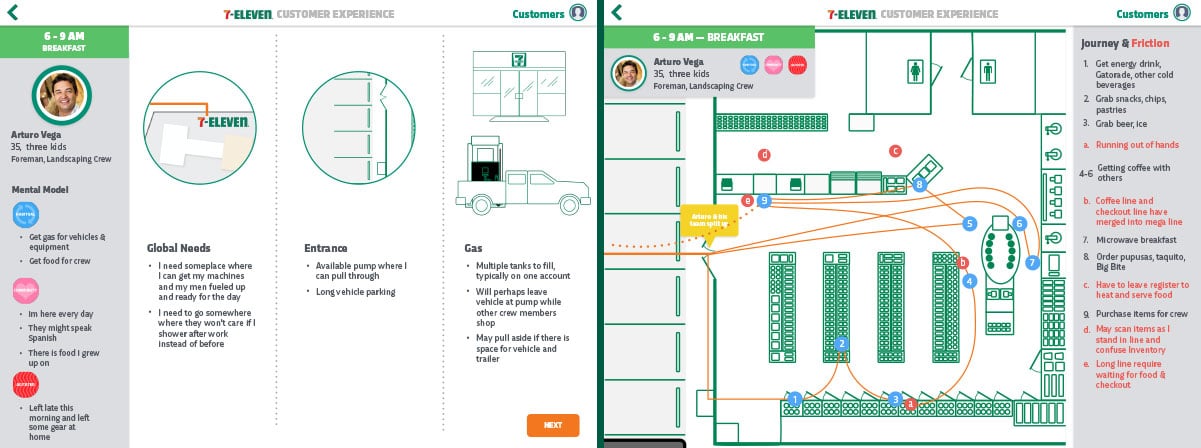7-Eleven needed to innovate in order to keep up with the competitive landscape they were a part of, they sought to elevate their brand and better serve their customers with digital solutions. Their challenge was to identify and solve friction points within their stores while also making an emotional connection with customers.
To remain competitive in an ever-changing world, 7-Eleven needed to find ways to use digital platforms in order to better serve their customers. Before investing in any true development, it was imperative that they determined where in their customer interactions, or which parts of their customer journeys were most impacted by friction. 7-Eleven needed to partner with an expert in order to research and prototype connected experiences for the brand that could demonstrate the impact that this friction was having on their overall customer experience. Knowing Bottle Rocket’s history with innovating mobile and digital experiences, 7-Eleven leaned on our expertise to develop proof of concepts for easing friction in store.

To prove the value that connected experiences could provide to 7-Eleven decision makers, Bottle Rocket focused on delivering actionable concepts and recommendations that would reduce friction and increase an emotional connection to the brand. Our approach was split into two phases; phase one being research and development, with the second being concept design. For this project, we worked in two-week sprints, each ending in meetings with 7-Eleven.
We began phase one by conducting ethnographic research, observing how customers interacted with different objects throughout the store at different times of day. To learn more details about customer habits, we interviewed customers who fit into distinct groups we recognized from our initial observations. From these interviews, we learned more about what drives 7-Eleven customer actions and how mobile devices could cater to them. Additionally, our strategists researched the employee experience, observing from behind the counter throughout the day. We compared this to competitive research gathered from observing other convenience stores and their activity and layout.

Our research revealed approximately 200 friction points within a store. To solve for such friction, we attempted to rewind the customer journey back to what prompts them to take action, discovering why a customer chose to shop at a particular store at any time of day, and how and why they chose to purchase certain products. From there, we produced customer journey maps and developed personas that helped frame an experience design (XD) strategy as we entered the concept phase.
Concept design began with validated ethnographic data points which were proof-tested within the same groups that were interviewed during the ethnographic research phase. Using Bottle Rocket’s signature lo-fi to hi-fi development process, the team took concepts from sketches to tappable prototypes.

Research validated several potential ideas, which then were narrowed down to seven that fit the problem and opportunity criteria set forth by 7-Eleven. Of these, two ideas became testable prototypes. These prototypes, designed to serve at least three use cases and demonstrate value propositions and ROI, could be presented to C-Suite members of 7-Eleven. These actionable concepts aimed to reduce friction within the experience while also increasing an emotional connection to customers.
With high-level blueprints from our findings and concepts, 7-Eleven was ready to move to the next level of development for branded consumer products. These products respond to customer desires and the space they occupy, a truly connected lifestyle in the convenience store aisle.
